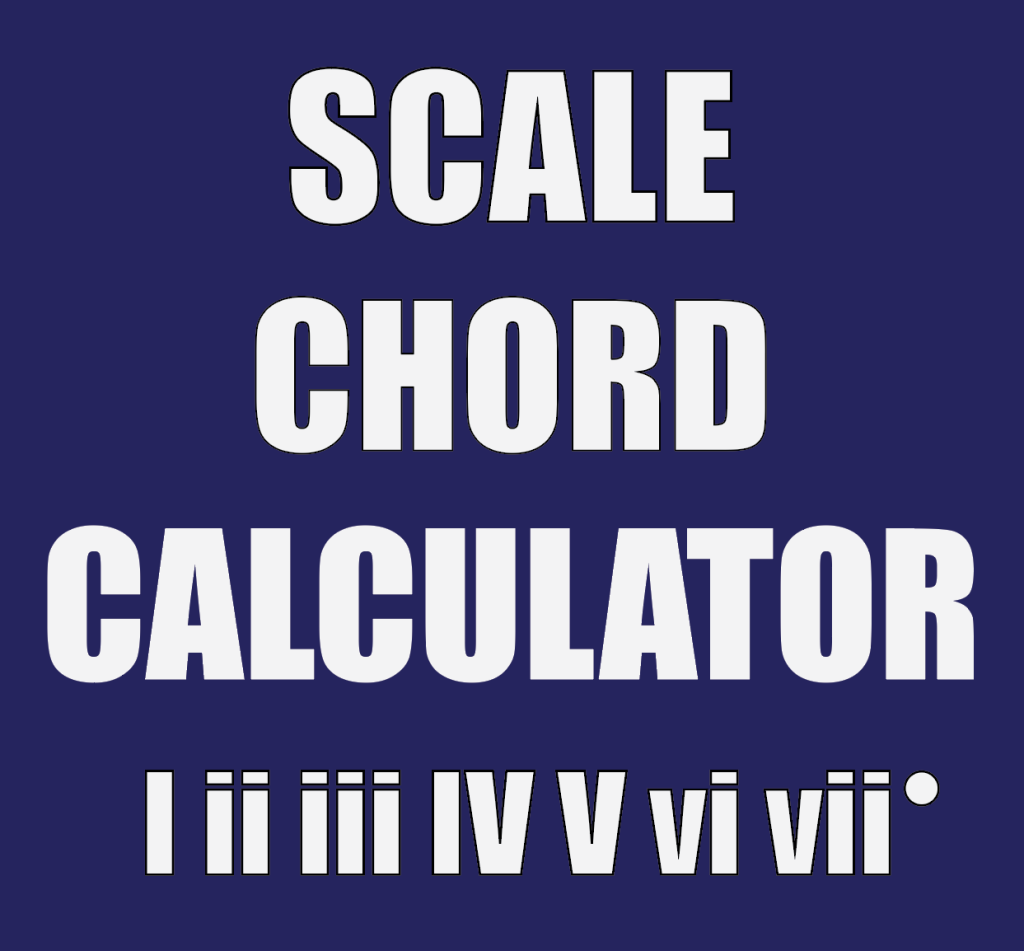Scale Chord Calculator
Exploring the Scale Chord Calculator: Understanding Diatonic, Secondary Dominants, and Borrowed Chords
In the world of music theory, scales and chords form the backbone of composition and improvisation. For musicians—whether you’re a beginner exploring harmony or an advanced player crafting complex arrangements—having a tool that helps navigate these chords within different scales can be a game changer. Enter the Scale Chord Calculator, a powerful tool designed to assist musicians in identifying essential chords across three important categories: Diatonic Chords, Secondary Dominants, and Borrowed Chords.
Let’s dive into the purpose and function of this tool, and how it can enhance your understanding of music theory and your ability to create music.
What is a Scale Chord Calculator?
The Scale Chord Calculator is a music theory tool that generates chords from any selected major scale. It offers three distinct outputs based on the scale chosen:
- Diatonic Chords – The chords naturally occurring within the scale.
- Secondary Dominants – Dominant seventh chords that act as transitions to other diatonic chords.
- Borrowed Chords – Chords borrowed from the parallel minor scale.
Each of these categories plays a crucial role in defining the harmonic framework of a key. With the calculator, users can quickly identify the specific chords they can use in their compositions or improvisations, all while maintaining a harmonic relationship with the root scale.
The Purpose of Each Chord Category
1. Diatonic Chords
Diatonic chords are the bread and butter of any scale. They are built directly from the notes within the scale and form the foundation of harmony in Western music. In a major scale, the diatonic chords follow a specific pattern based on the intervals of the scale. These chords typically include:
- Major (I, IV, V)
- Minor (ii, iii, vi)
- Diminished (vii°)
For example, in the key of C Major, the diatonic chords are: C, Dm, Em, F, G, Am, Bdim
These chords create a stable and familiar harmonic structure, and they are perfect for creating simple, pleasant-sounding progressions.
2. Secondary Dominants
While diatonic chords are important, sometimes a composer or musician wants to add tension, resolve to unexpected places, or create more sophisticated progressions. This is where Secondary Dominants come in.
Secondary Dominants are dominant seventh chords that temporarily “borrow” the function of a dominant chord for a different chord in the key. They resolve to diatonic chords other than the tonic (I). These chords are often used to enhance chord progressions by creating brief moments of tension and release.
For example, in the key of C Major, the secondary dominants are: C7, D7, E7, A7
These chords lead the listener’s ear to expect resolution, giving your music movement and surprise.
3. Borrowed Chords
Borrowed chords are some of the most exciting and emotionally powerful chords available to musicians. They come from the parallel minor key of the chosen major scale. By “borrowing” chords from the minor version of the key, composers can add complexity and emotional depth to their music.
In the case of C Major, the borrowed chords come from C minor and might include: Cm, Eb, Fm, Gm, Ab, Bb
These chords help you break free from the limitations of the major scale, bringing darker, richer, and more nuanced harmonic options into your progression.
How Does the Scale Chord Calculator Work?
Using the Scale Chord Calculator is simple and intuitive. Musicians select a major scale (such as C Major, D Major, or B Major) from the dropdown menu. Once a scale is selected, the calculator generates three separate categories of chords:
- Diatonic Chords
- Secondary Dominants
- Borrowed Chords
The calculator then displays these chords in easy-to-read lists, allowing musicians to quickly see what harmonic options are available for their chosen scale. It eliminates the need to manually calculate each chord, making it faster and easier for musicians to craft sophisticated chord progressions in real time.
Why Use the Scale Chord Calculator?
1. Efficiency in Composition
For songwriters and composers, the calculator speeds up the process of finding chord progressions that fit within a scale. No need to laboriously calculate each chord manually. Whether you’re composing on paper or working digitally, the calculator saves time and sparks new ideas.
2. Harmonic Exploration
Musicians often struggle with breaking free from common chord progressions. The Secondary Dominants and Borrowed Chords categories allow you to introduce new, unexpected harmonic turns, making your music more interesting and diverse.
3. Learning and Understanding Music Theory
The calculator is also an excellent educational tool. It shows how different chords function within a scale and helps musicians internalize theoretical concepts. Whether you’re a student trying to understand harmony or an advanced musician looking to deepen your theory knowledge, the tool helps make sense of key relationships and chord functions.
Conclusion
The Scale Chord Calculator is a versatile and powerful tool for musicians of all skill levels. It takes the guesswork out of chord selection, whether you’re looking for the foundation provided by diatonic chords, the tension and resolution of secondary dominants, or the emotional complexity of borrowed chords. By using this tool, musicians can expand their harmonic vocabulary and enhance their compositions, all while deepening their understanding of music theory.
Whether you’re composing, improvising, or just exploring new harmonic possibilities, the Scale Chord Calculator is the perfect tool to have in your musical toolkit.


Leave a Reply